A Closer Look at Wisteria at Markshall
This year the Horticulture Team are undertaking renovation of the magnificent Wisteria, that shrouds a lower weir on the estate, to its previous glory. Its last great haircut was in 2019 and since then, this long-lived vining plant has been left to its own devices, resulting in fewer flowers and an abundance of whippy stems and foliage.
Origins of Wisteria
Draped with fragrant long racemes of mauve, white, pink or dramatic dark purple pea-flowers, there is perhaps no more beautiful climber than Wisteria. An impressive sight when in full flower, these staples of the ‘romantic cottage garden’ originate from Asia and some parts of North America.
The two best-known varieties found in the UK are Wisteria sinensis, originally from China and introduced into the UK in 1816; and Wisteria floribunda from Japan, introduced into the UK in 1830.
The lilac-flowered specimen at Markshall, is a Wisteria sinensis, and was planted on the Estate several decades ago.
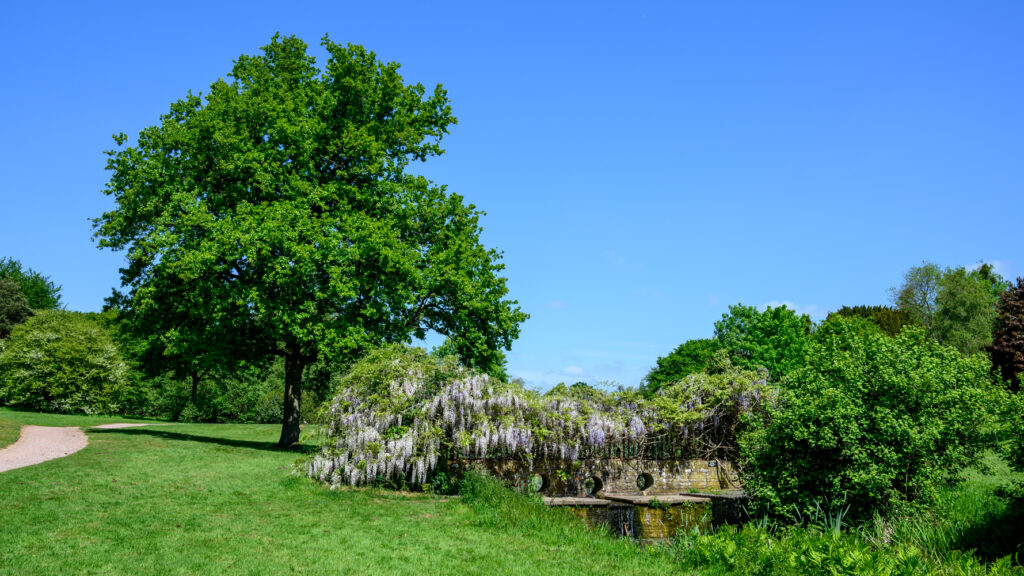
Interesting fact: Did you know that stems twine anti-clockwise for Wisteria sinensis and clockwise for Wisteria floribunda?
Growing conditions
Wisterias prefer to grow in full sun in loamy, well-drained soil. They will grow happily in light shade, but will produce fewer flowers. Ideally, they prefer to grow against a South or West-facing wall.
Flowering
May and June are the traditional flowering times in the UK, with occasional flowers in summer.
Pruning
Wisterias need regular pruning to keep their vigorous growth and size under control, resulting in an improved flowering display. The key principle is to restrict the amount of vegetative growth, which encourages the formation of short, flowering spurs.
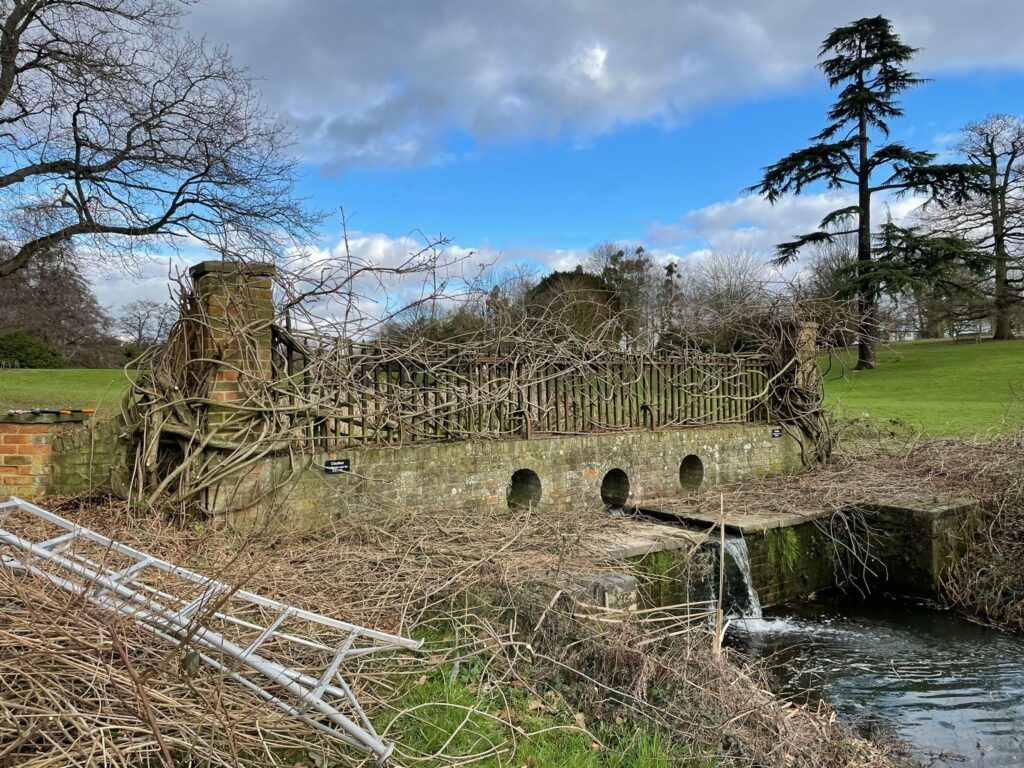
Summer pruning (July – August)
Cut back whippy shoots of the current year’s growth to five or six leaves after flowering. This controls the size of the Wisteria, and allows air circulation and sunlight to reach the base of the young growth, encouraging ripening of the wood and improving flower bud formation.
Winter pruning (January – February)
Then, cut back the same growths to two or three buds in January or February (when the plant is dormant and leafless) to tidy it up before new growth starts and ensuring the flowers will not be obscured by leaves.

Renovation pruning at Markshall
With 3 years unchecked growth, we may need to remove some of the older growth, by removing sections of old stems to just above a strong young branch lower down. The end result should be a skeleton frame work of reasonably well-spaced branches, which we hope will be covered in an abundance of flowers in 2-3 years’ time.
Aftercare
Normally we would feed the Wisteria with rose fertiliser (rich in flower-promoting potassium and magnesium) every March to promote regular flowering and healthy growth. However, as hard pruning stimulates strong, new growth, it is better to avoid feeding in the first spring.
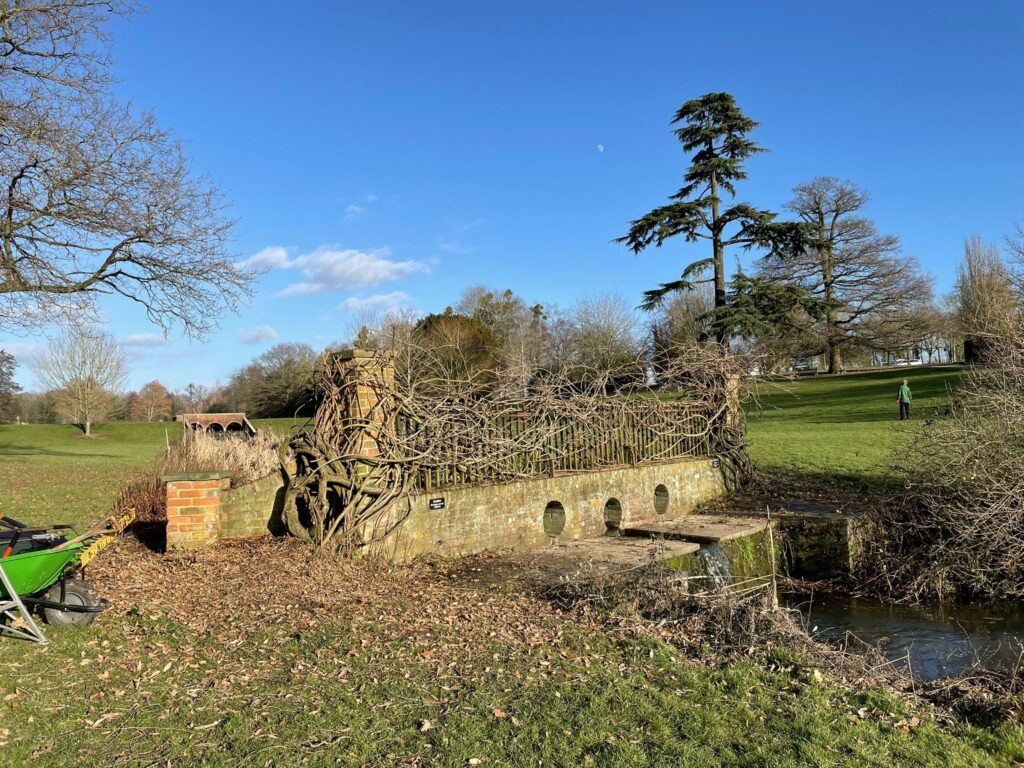
We hope you enjoyed this blog post written by Emma, one of our amazing Horticulturalists. Hopefully this has inspired you to get outside in your garden and prune your wisteria during the winter months.
More from the blog
See more
-
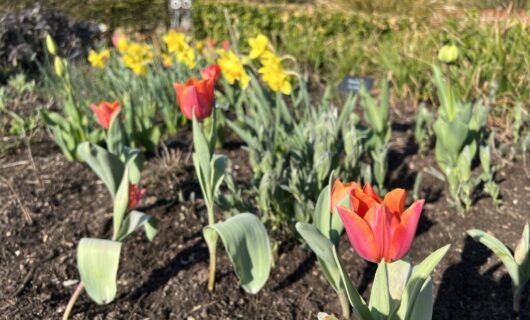
Updates from the Walled Garden in Spring
What can be discovered in the Walled Garden at Markshall this Spring? Our Walled Garden is home to a stunning […]
-

Commemorating the 80th Anniversary of Operation Varsity
What was Operation Varsity? Operation Varsity was the codename for the largest single airborne operation conducted on a single day […]
-
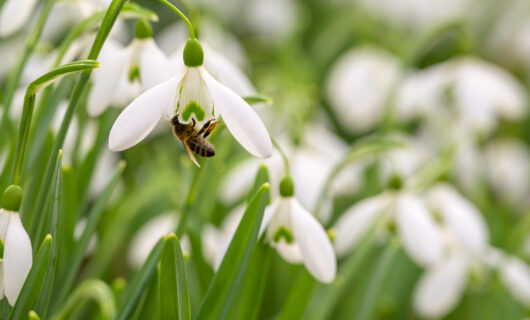
Your guide to enjoying the snowdrop display at Markshall
February is the best time to visit Markshall’s spectacular snowdrop display. To ensure that you make the most of your […]